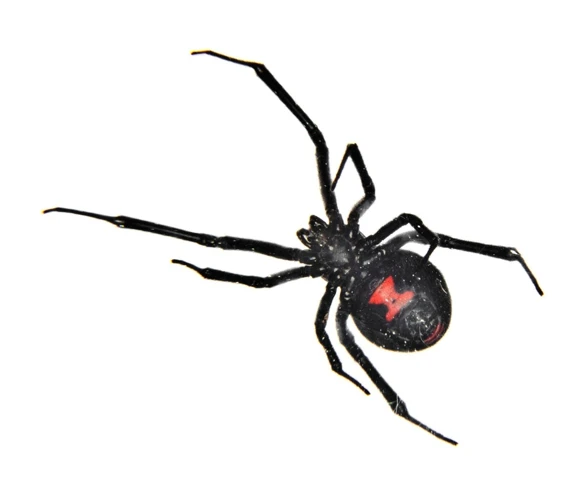Introduction
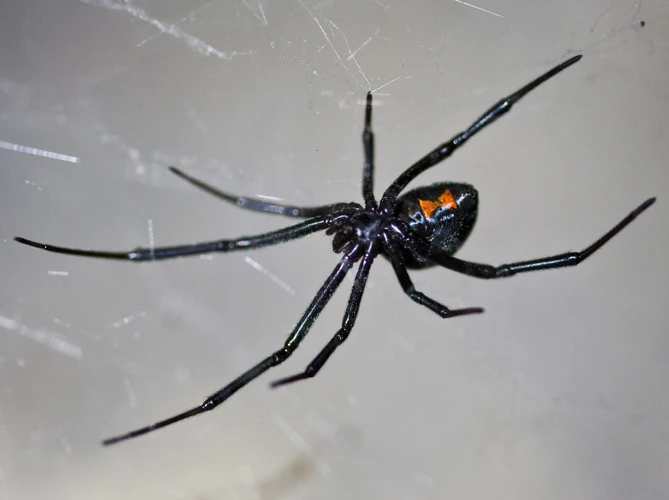
The world of arachnids is one of great diversity and intrigue. Among the most well-known of all spider species is the Black Widow, which is famous for its venomous bite and distinctive appearance. But what is it about these creatures that make them such formidable predators? In this article, we will explore the physical and behavioral characteristics of the Black Widow Spider that enable it to catch prey with ease. From their powerful neurotoxic venom to their intricate webs, we will delve into the unique features that make these creatures so fascinating. So put on your arachnologist hat and let’s take a closer look at what makes the Black Widow Spider so special.
Overview of Black Widow Spiders
Black widow spiders are one of the most well-known spiders due to their unique and stunning appearance. They are characterized by their shiny black bodies, often marked with distinct red hourglass-like shapes on their abdomen. They belong to the family Theridiidae, which is widely known for its cobweb weavers. The female black widow spiders are larger than males, with a body length of around 12-13 millimeters and a leg span of around 38 millimeters. However, the male black widow spiders are smaller, with a body length of around 3-4 millimeters and a leg span of around 9-10 millimeters.
Black widow spiders have several unique physical characteristics that enable them to be agile and efficient predators. These include the shape of their body, their sensory capabilities, and the strength of their webs. One of the most prominent physical characteristics of black widow spiders is their neurotoxic venom, which can take down prey several times larger than the spider itself. Their silk is also incredibly strong and elastic, which enables it to be used in several different ways.
Black widow spiders can be found in different habitats around the world, from deserts to forests. They have adapted well to these different environments and can be found in several different subspecies. For example, the southern black widow spider is typically found in the Americas, while the redback spider is the black widow’s counterpart in Australia.
Black widow spiders are fascinating creatures that have several unique physical characteristics that enable them to be excellent hunters. Their neurotoxic venom, stealthy hunting techniques, and strong webs are just some of the adaptations that make them agile predators. By understanding their physical characteristics, we can not only gain a greater appreciation for these spiders but also develop new technologies inspired by them.
Physical Characteristics
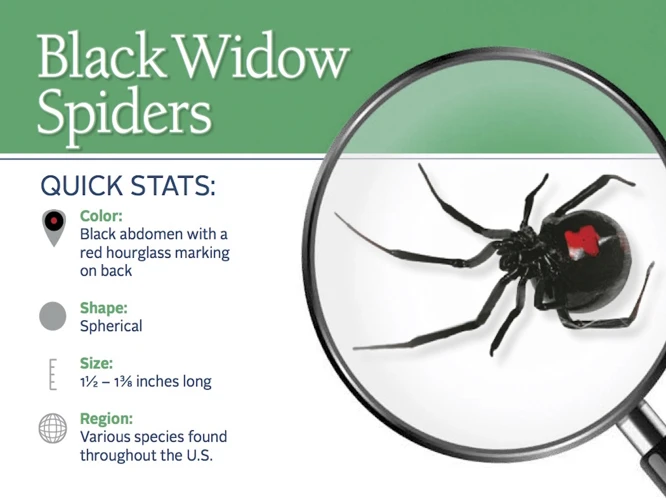
The physical characteristics of the black widow spider are fascinating and play a crucial role in their ability to catch prey. These spiders have evolved unique features that allow them to survive and thrive in their environment. Understanding the physical characteristics of black widow spiders is essential to appreciate their importance in the ecosystem. From their neurotoxic venom to their strong webs and stealthy hunting techniques, black widows are a masterpiece of nature’s creation. In this section, we will delve deeper into the physical characteristics that make the black widow spider stand out among other arachnids. Let’s explore these features that enable black widows to catch their prey with precision and speed.
Neurotoxic Venom
The Black Widow Spider is well known for its potent venom, which it uses to immobilize its prey and defend itself from predators. The neurotoxic venom of a Black Widow Spider is made up of unique proteins that target the nervous system of its prey. The venom is stored in venom glands located in the Black Widow’s abdomen and is released through hollow fangs when the spider bites its prey.
Some of the main effects of the neurotoxic venom include:
- Severe pain
- Muscle spasms
- Paralysis
- Death (in some cases)
Interestingly, the neurotoxic venom of the Black Widow Spider affects different animals in varying ways. For example, while the venom can be lethal to small vertebrates, it has a much less severe effect on insects and some arthropods. This suggests that the venom is highly adaptive and specialized for hunting particular prey.
It’s worth noting that Black Widow Spiders do not use their venom to attack humans unless they are threatened, as humans are not a part of their natural prey. However, a bite from a Black Widow Spider can still be dangerous to humans, and medical attention should be sought immediately if bitten.
Understanding the components of the neurotoxic venom and its effects on prey is essential for researchers in recreating Black Widow inspired technologies such as neurotoxic compounds and adhesive webs. If you’re interested in learning more about the physical characteristics of the Black Widow Spider, check out our article on sensory capabilities of Black Widow Spiders.
Strong Webs
One of the physical characteristics of black widow spiders that enable them to catch prey is their strong webs. Their webs are made of silk that is five times stronger than steel of equivalent thickness. Black widow spiders use their webs not only to capture prey, but also to protect themselves and their eggs.
The silk used to make the webs is produced in the spider’s abdomen and is released through spinnerets located at the end of the abdomen. Black widow spiders have three pairs of spinnerets that produce different types of silk for different purposes. The silk used to make their webs is a sticky and elastic silk that is perfect for trapping prey.
Black widow spiders’ webs are not only strong, but they are also strategically placed to catch their prey. These spiders often build their webs near light sources, such as streetlights, which attract insects. They also build their webs in areas where they know insects are likely to fly into them.
Once prey becomes trapped in their webs, black widow spiders can quickly immobilize it using their neurotoxic venom, as discussed earlier. They then wrap the prey in silk and carry it back to their retreat to feed.
It’s worth noting that many other species of spiders also have strong webs, but black widow spiders’ webs are particularly noteworthy for their strength and stickiness, which make them highly effective at catching prey.
Understanding the physical characteristics of black widow spiders, including their strong webs, can help us appreciate the unique adaptations that have evolved in these creatures. If you’re interested in learning more about the body structure and survival mechanisms of black widow spiders, check out this informative article on their body structure and survival or this comparison of spider body types.
Stealthy Hunting Technique
Black Widow Spiders are known for their stealthy hunting techniques. These spiders use their dark coloration to blend into their surroundings and stalk their prey. They are also able to wait patiently for their prey to come to them. Once they have located their prey, they use their strong webs to trap and immobilize it. The Neurotoxic Venom of the black widow spider plays a crucial role in rapidly immobilizing their prey.
Stealthy Hunting Technique:
- Black Widow Spiders use their dark coloration to blend into their surroundings and stalk their prey.
- They wait patiently for their prey to come to them.
- Once located, they immobilize the prey with their strong webs.
- The Neurotoxic Venom plays a crucial role in rapidly immobilizing their prey.
It’s fascinating how black widow spiders use their unique physical characteristics to become expert hunters. Their prey never knows what’s coming their way until it’s too late. To understand more about the physical characteristics of black widow spiders that enable them to catch prey, you can read this article /understanding-physical-characteristics-black-widow-spiders/.
Behavioral Characteristics
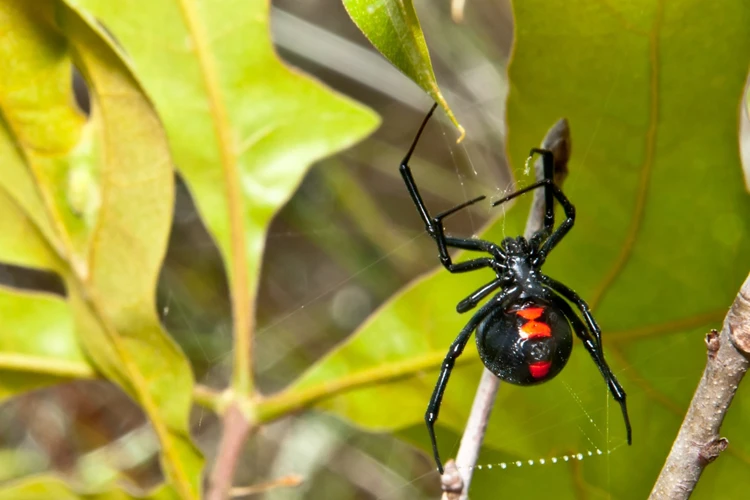
When it comes to the black widow spider’s hunting prowess, it’s not just their physical attributes that help them catch prey. Their behavioral characteristics also play a significant role. From their remarkable patience to their intelligence and slow metabolism, there are several factors that contribute to their success as hunters. In this section, we’ll take a closer look at the behavioral characteristics of black widow spiders and how they use them to catch their prey. But before we delve into this topic, be sure to check out our previous articles on black widow spider body structure, silk uses, and hairs functions, to help you gain a deeper understanding of the spider’s survival strategies.
Patience and Determination
Patience and determination are key behavioral characteristics that enable black widow spiders to catch their prey. While some spiders are active hunters, black widow spiders rely on patience to capture their prey. They spin their webs in strategic locations and wait for the prey to come to them. This requires a tremendous amount of patience and determination.
Black widow spiders are known to wait for hours to capture their prey. This is because they need to conserve their energy and wait for the right opportunity to strike. They carefully monitor their prey, waiting for the right moment to pounce.
| Behavioral Characteristics | Description |
|---|---|
| Patience | Black widow spiders rely on patience to capture their prey. |
| Determination | Black widow spiders exhibit a high degree of determination while waiting for their prey. |
Black widow spiders exhibit determination as well. Even if they miss their initial opportunity to strike, they will continue to wait until another chance arises. This is an important characteristic that has allowed these spiders to survive and thrive in a wide range of environments.
While patience and determination may seem like simple traits, they are critical to the survival of black widow spiders in the wild. In fact, without these behavioral characteristics, these spiders may not be able to catch enough prey to sustain themselves.
The combination of physical and behavioral characteristics makes black widow spiders some of the most successful predators in the arachnid world. Their patience and determination, coupled with their powerful venom and strong webs, make them one of nature’s most efficient killing machines.
Intelligence
One of the most fascinating characteristics of black widow spiders is their intelligence. These creatures have a remarkable ability to assess their environment and adapt to new situations.
Intelligence is a complex trait that involves many different processes, including problem-solving, learning, memory, and communication. Black widow spiders have demonstrated all of these abilities in various experiments conducted by researchers.
For example, in one study, black widows were able to learn to associate a specific scent with a reward of food. Even more impressively, when the researchers changed the scent, the spiders were able to quickly learn the new association and adjust their behavior accordingly.
In another study, black widows demonstrated the ability to distinguish between different colors and shapes, indicating a high level of visual intelligence. They have also been shown to communicate with each other through vibrations and chemical signals.
To summarize the intelligence of black widow spiders:
| Ability | Description |
| Problem-solving | Black widows can learn to associate different scents with rewards, and adapt quickly to changes. |
| Learning | Black widows can learn to distinguish between different colors and shapes. |
| Memory | Black widows can remember learned associations and adjust their behavior accordingly. |
| Communication | Black widows can communicate with each other through vibrations and chemical signals. |
Black widows’ intelligence is crucial to their hunting and survival strategies. Their ability to learn from their environment and adapt to new situations is a key factor that enables them to catch prey and thrive in diverse ecosystems. To learn more about the physical and behavioral characteristics of black widow spiders, check out our related articles on /black-widow-spider-body-structure-survival/, /spider-body-types-comparison/, /black-widow-spider-silk-uses/, /black-widow-spider-hairs-functions/, /black-widow-subspeices-phys-char/, /size-differences-black-widows/, /adaptability-black-widow-spiders/, and /differentiate-black-widows/.
Slow Metabolism
Black widow spiders have a unique characteristic that differs them from other spiders, their slow metabolism. This means that their bodies take longer to process the food they consume, leading to a longer period of feeling satiated and nourished. These arachnids can survive for months with just one meal, making them incredibly adaptable to different environments with limited resources.
This slow metabolism is thought to be an adaptation to black widow spiders’ cannibalistic behavior. In the wild, black widows are known to eat other spider species, and even other black widows. To conserve energy, black widows evolved slow metabolism so that they can survive on fewer meals for longer periods.
Slow metabolism also allows black widow spiders to conserve energy during periods of drought or famine. A black widow spider can remain inactive for weeks, conserving energy by reducing its metabolic rate until food becomes available. This gives them a certain level of survival advantage over other species that require food more frequently.
The black widow spider’s slow metabolism is a unique physical characteristic that enables them to survive on one meal for long periods. This characteristic also helps them survive during times of hardship, making them highly adaptable creatures.
Black Widow Spider Prey
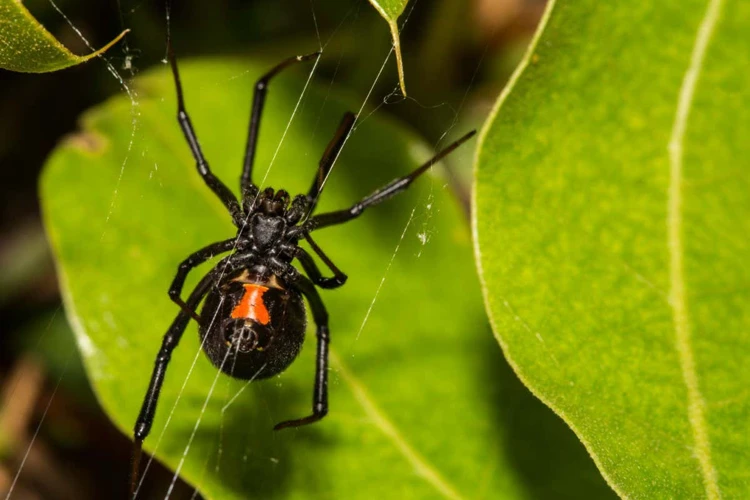
The black widow spider is a skilled and efficient predator, capable of catching a wide variety of prey. From insects to small vertebrates, these powerful arachnids use their impressive physical and behavioral characteristics to secure their next meal. Let’s dive deeper into the diverse range of prey that black widow spiders hunt and consume.
Insects
Black widow spiders are known to prey on a variety of insects. These include flies, mosquitoes, grasshoppers, beetles, and ants, among others. Black widow spiders have unique physical characteristics that allow them to efficiently capture and consume their prey.
The Neurotoxic Venom: Black widow spiders possess a venom that is neurotoxic and can cause paralysis in their prey. This venom is specifically designed to target the nervous system of insects, causing them to become paralyzed and unable to move.
The Strong Webs: Black widow spiders are masterful weavers and build strong webs that are sticky, allowing them to catch their prey as it tries to escape. These webs are made from a combination of silk and sticky substances that are secreted by the spider.
The Stealthy Hunting Technique: Black widows use a stealthy hunting technique to capture insects. They typically hide in their webs, waiting for an unsuspecting insect to get trapped. Once an insect is captured, the spider quickly moves in to inject it with its venom, paralyzing the prey and allowing the spider to feed at its leisure.
To further illustrate the black widow spider’s diet, take a look at the table below:
| Insect | Diet of Black Widow Spiders |
|---|---|
| Flies | Prey for black widow spiders |
| Mosquitoes | Prey for black widow spiders |
| Grasshoppers | Prey for black widow spiders |
| Beetles | Prey for black widow spiders |
| Ants | Prey for black widow spiders |
Black widow spiders are able to capture and consume a diverse range of insects, allowing them to survive and thrive in a variety of habitats. It is important to understand the significance of the black widow spider’s role in the ecosystem and appreciate their unique physical and behavioral characteristics.
Arthropods
Black widow spiders are known for their ability to catch and consume a variety of prey, including arthropods. Arthropods are a diverse group of invertebrates that includes insects, crustaceans, and arachnids such as spiders. These types of prey are essential for the survival of black widows, as they provide a source of protein for growth and reproduction.
Black widows use their strong webs to catch arthropods, especially insects, that fly or crawl into their territory. The webs are made of strong and sticky silk that is difficult for any arthropod to escape from. Once an arthropod gets caught, the black widow quickly approaches it and bites it with her neurotoxic venom.
The venom of black widows is so potent that it can paralyze and kill an arthropod within seconds. This venom contains a complex mixture of neurotoxic compounds that target the nervous system of the prey, causing paralysis and eventually death.
Some of the arthropods that black widows commonly prey upon include flies, grasshoppers, beetles, and other spiders. These arthropods may be small in size, but they provide a significant source of nutrition for black widows.
Here is a table with some examples of arthropod prey that black widows commonly catch:
| Arthropod Prey | Description |
|---|---|
| Flies | Small, winged insects that are attracted to decaying organic matter. |
| Grasshoppers | Herbivorous insects with long hind legs for jumping and powerful mandibles for chewing. |
| Beetles | Hard-shelled insects that come in a variety of shapes and sizes. |
| Other Spiders | Smaller spider species that are caught in the black widow’s web and consumed. |
Black widows have a highly effective hunting strategy that allows them to catch and consume a diverse range of arthropod prey. Their combination of strong webs, potent venom, and stealthy hunting techniques make them a formidable predator in their ecosystem.
Small Vertebrates
Black widow spiders are known to capture and consume a variety of prey, including small vertebrates. These animals are typically caught in the spider’s web and immobilized with their neurotoxic venom. Small vertebrates that may become prey for black widow spiders include lizards, frogs, and even small mammals such as mice.
One of the reasons black widow spiders are able to catch these small vertebrates is due to their strong webs, which are made from strong and elastic silk. In fact, the silk of the black widow spider is considered to be one of the strongest natural materials known to science. This allows the web to ensnare the prey and hold it in place until the spider can approach.
In addition to their strong webs, black widow spiders also possess excellent sensory abilities. They are able to detect vibrations and movement in their webs, allowing them to rapidly respond to any potential prey caught in their trap. Once a prey item has been caught, the spider will use its neurotoxic venom to subdue it.
While small vertebrates are not the primary prey of black widow spiders, they are still an important source of food for these arachnids. This ability to prey upon a wide variety of animals has allowed black widow spiders to thrive in a variety of environments, from deserts to forests.
| Small Vertebrates Prey: | Lizards | Frogs | Small mammals such as mice. |
| Black Widow Spider Abilities: | Strong webs made from strong and elastic silk | Excellent sensory abilities to detect vibrations and movement in their webs | Neurotoxic venom to subdue prey |
While it may seem daunting to think of black widow spiders preying on small vertebrates, it is important to remember that these spiders play an important role in the ecosystem by helping to control insect populations. It is also essential to treat these creatures with respect and avoid disturbing them, as they can bite if provoked. By understanding and appreciating the physical and behavioral characteristics of black widow spiders, we can continue to learn from them and use their unique abilities to inspire new technology and conservation efforts.
Prey-Inspired Technologies
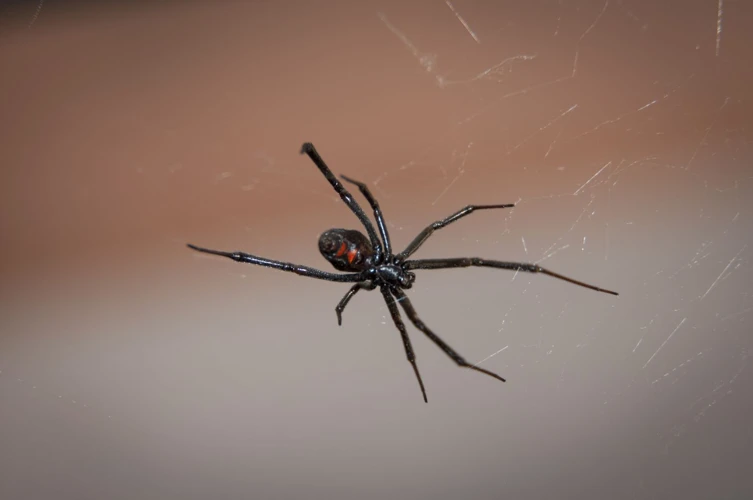
As we continue to study the natural world around us, we often find inspiration for new technological advancements. One such area of study is the unique abilities of black widow spiders when it comes to catching prey. These spiders possess a combination of physical and behavioral characteristics that make them highly efficient hunters. Engineers and scientists have taken notice of these traits and are working to develop new technologies that are inspired by the predatory strategies of black widow spiders. Let’s take a closer look at some of these prey-inspired technologies and how they could be used in the future.
Adhesive Webs
By closely studying the composition and strength of black widow spider webs, scientists have developed technologies inspired by these adhesive structures. The webs themselves are made of protein fibers that are coated in a sticky glue, allowing them to capture prey with ease. This unique adhesive quality is what makes black widow spider webs so fascinating to scientists and engineers alike.
One way this technology has been used is in the development of strong, lightweight adhesives that are useful in a variety of applications, from aerospace to medical devices. These adhesives are made by imitating the structure of the black widow spider’s webs, using a combination of synthetic and natural materials to create a glue that is both strong and flexible.
Another application of black widow spider web-inspired technology is in the production of new types of sensors. Scientists have found a way to use the adhesive properties of the spider’s webs to create sensors that can detect changes in temperature, pressure, and even sound. These “smart” materials could be used in a range of applications, from monitoring the health of structures like buildings and bridges to creating new technologies for the military.
Perhaps one of the most remarkable uses of black widow spider web-inspired technology is in the development of new types of prosthetic limbs. By studying the way the spiders use their webs to move and catch prey, engineers have been able to develop prosthetics that are capable of moving and grasping objects with more precision and accuracy than ever before. These prosthetics use a combination of materials and sensors to create a lifelike version of a spider’s web that can be used to control the movement of the prosthetic limb.
It’s clear that the black widow spider and its unique adhesive webs hold a treasure trove of secrets and inspiration for scientists and engineers. By using this incredible natural technology as a starting point, researchers are able to create new and innovative solutions to some of the world’s toughest challenges. So next time you see a black widow spider web glistening in the sun, remember that it’s not just a beautiful sight – it’s also a source of inspiration for some of the most cutting-edge technologies of our time.
Neurotoxic Compounds
One of the most deadly and effective weapons in a black widow spider’s arsenal is its neurotoxic venom. This venom contains several potent neurotoxic compounds that can paralyze and kill their prey within minutes. These compounds are specifically designed to target the nervous system of their prey, causing it to shut down and ultimately leading to its death.
What makes these neurotoxic compounds so effective is their ability to target specific types of neurons and receptors. One such compound is α-latrotoxin, which targets the calcium channels in the nervous system. This causes an influx of calcium ions into the neurons, leading to the release of neurotransmitters and ultimately causing paralysis.
Another compound found in the black widow spider’s venom is ω-atracotoxin, which targets the voltage-gated ion channels in the nervous system. This causes the channels to remain open, leading to an influx of ions and ultimately causing paralysis.
To give a better understanding of the potency of these neurotoxic compounds, it is worth noting that they are being studied for their potential use in medical applications. Some researchers believe that they may hold potential as painkillers, muscle relaxants, and even as treatments for neurological disorders such as epilepsy.
It’s important to note that while the neurotoxic venom of the black widow spider is extremely effective at killing prey, it is rarely fatal to humans. However, if bitten, symptoms can include nausea, vomiting, muscle cramps, and even seizures.
Table:
| Compound Name | Target in Nervous System | Effect |
|——————-|——————————-|——————————————————–|
| α-latrotoxin | Calcium Channels | Influx of calcium ions, release of neurotransmitters, paralysis |
| ω-atracotoxin | Voltage-gated Ion Channels | Open channels, influx of ions, paralysis |
The neurotoxic compounds found in black widow spider venom are a fascinating and powerful example of the adaptations that have allowed these spiders to become such effective predators. While these compounds are incredibly potent and potentially useful, it’s important to respect and appreciate the black widow spider’s place in the natural world and to take precautions to avoid accidental bites.
Stealthy Robots
One of the most fascinating applications of technology inspired by Black Widow Spiders is the development of stealthy robots that can be used for various purposes. These robots are designed to move quietly and swiftly, just like the spiders, to achieve their goals without detection.
Design features:
To make these robots stealthy, they are built with several physical and behavioral characteristics that are similar to those of the Black Widow Spider. These include:
| Design Features | Description |
|---|---|
| Thin and Light | The robots are thin and light, allowing them to move quickly and with agility. |
| Flexible and Durable | The robots have flexible and durable bodies that can bend and adapt to different environments. |
| Advanced Sensor Systems | The robots have advanced sensor systems that allow them to detect their surroundings and avoid obstacles. |
| Adhesive Foot Pads | The robots have adhesive foot pads that enable them to climb vertical surfaces and move silently without alerting their prey. |
Applications:
Stealthy robots inspired by Black Widow Spiders have a wide range of potential uses. These include:
| Application | Description |
|---|---|
| Surveillance and Security | Stealthy robots can be used for surveillance and security purposes, allowing them to move through areas undetected and gather information without being noticed. |
| Search and Rescue | Stealthy robots can be used in search and rescue operations, where they can navigate through collapsed buildings and other dangerous environments to locate survivors. |
| Environmental Monitoring | Stealthy robots can be used for environmental monitoring, where they can move through delicate ecosystems without disrupting them, while gathering data on plant and animal populations. |
| Exploration | Stealthy robots can be used for exploration in space or on other planets, where they can move quietly and survive in harsh environments. |
The development of technology inspired by the physical and behavioral characteristics of Black Widow Spiders can lead to some exciting and innovative solutions for various challenges. The use of stealthy robots is just one example that highlights the potential of nature-inspired design to help us solve complex problems with ingenuity and creativity.
Conservation and Solidarity
As we explore the intricacies of the black widow spider and its predatory behaviors, we can’t ignore the significance of conservation efforts and solidarity in protecting these species. It is essential to dispel myths and misconceptions surrounding black widows and recognize their crucial role in maintaining a balanced ecosystem. In this segment, we delve into the importance of understanding and respecting nature, and how we can do our part in conserving the unique and fascinating black widow spider.
Myths and Misconceptions
There are many myths and misconceptions surrounding black widow spiders, which have contributed to their infamy and negative reputation. Here are some common misconceptions debunked:
- Black widows are not aggressive. Despite their reputation for being aggressive, black widow spiders are actually quite shy and tend to avoid confrontation with humans. They will only bite if they feel threatened or cornered.
- Not all black widow spiders have a red hourglass on their abdomen. While the black widow spider is known for its distinctive red hourglass marking on its abdomen, not all black widow spiders have this marking. In fact, some species have red dots, lines, or no markings at all.
- Black widow spiders do not always kill their mates. Contrary to popular belief, black widow spiders do not always kill their mates after mating. This behavior only occurs in certain circumstances, such as when the female is hungry or if the male is particularly small and weak.
- Black widow spider venom is not always deadly. While black widow spider venom is highly toxic and can be deadly to smaller animals and humans, not all bites result in death. Many people who are bitten experience only moderate symptoms, such as muscle pain, cramps, and nausea.
- Black widow spiders are not the most venomous spiders in the world. While black widow spiders are certainly venomous, there are other spiders in the world that produce more potent venom. For example, the Brazilian wandering spider is considered the most venomous spider in the world.
It’s important to separate fact from fiction when it comes to black widow spiders. Yes, they are venomous and can be dangerous if provoked, but they are not the aggressive killers that many people think they are. By understanding their true nature and behavior, we can coexist peacefully with these fascinating creatures.
Importance for Ecosystem
Every living organism has a role to play in the ecosystem, and black widow spiders are no exception. Despite their infamous reputation, these spiders are actually quite important for maintaining the balance of the natural world.
Black widow spiders are natural predators, which means that they help to control the population of other insects and arthropods in their environment. This, in turn, can have a positive impact on plant life, as it reduces the number of pests that can damage crops and other vegetation.
According to the International Union for Conservation of Nature (IUCN), black widow spiders are not considered a threatened species. However, they can serve as an indicator of a healthy ecosystem. For example, if there are fewer black widow spiders in a particular area, it may suggest that there are problems with the local environment that need to be addressed.
In addition to their role in controlling the population of other animals, black widow spiders are also an important food source for many predators in the wild, including birds, lizards, and other spiders. Without black widow spiders, these animals may struggle to find enough food to survive.
It’s important to note that while black widow spiders may be venomous and potentially dangerous to humans, they are an important part of the natural world and should be respected and protected. By doing so, we can help to ensure that the delicate balance of the ecosystem remains intact.
| Black widow spiders help to: | Black widow spiders are: |
| Control population of other insects and arthropods | An indicator of a healthy ecosystem |
| Reduce damage to crops and other vegetation | An important food source for many predators |
Protecting and Respecting Nature
One of the key takeaways from the discussion of black widow spiders is the importance of protecting and respecting nature. These creatures play a crucial role in their ecosystem and contribute to biodiversity. As humans, it is our responsibility to ensure that these animals are not endangered or harmed due to our actions.
Here are some ways to protect and respect nature:
- Preserve natural habitats: This involves protecting the environment from human activities, such as pollution and deforestation. By supporting conservation efforts and advocating for policies that protect natural habitats, we can help to ensure that black widow spiders and other important species have a safe and healthy home.
- Reduce our carbon footprint: Climate change poses a significant threat to biodiversity and the natural world. By reducing our carbon footprint through actions such as driving less, using renewable energy, and reducing waste, we can help to limit the negative impact on ecosystems.
- Practice responsible pest control: While black widow spiders and other pests may pose a threat to humans, it is important to avoid using harmful pesticides and chemicals that can also harm non-target species. By using natural pest control methods and seeking out humane solutions when necessary, we can minimize the impact on the environment.
- Support conservation organizations: There are numerous organizations dedicated to protecting wildlife and the environment. By supporting these organizations through donations, volunteering, or spreading awareness, we can help to ensure that our natural world is protected for future generations.
By taking these steps and others like them, we can help to protect and respect the natural world and the important species like black widow spiders that call it home.
Conclusion
In conclusion, the black widow spider is an incredible creature with unique physical and behavioral characteristics that enable it to catch prey efficiently. Through its neurotoxic venom and strong webs, it is able to immobilize and consume a variety of prey, ranging from insects to small vertebrates. Its stealthy hunting technique, combined with its patience and determination, allows it to catch prey without being detected.
Not only are the black widow spider’s physical characteristics impressive, but they have also inspired various technologies, such as adhesive webs and neurotoxic compounds, which can have numerous practical applications. Additionally, it is important to dispel myths and misconceptions about the black widow spider and understand its importance in the ecosystem.
In studying the black widow spider, we can increase our understanding of the intricacies of nature and gain valuable insights that can help us solve practical problems. Ultimately, we must strive to protect and respect nature, recognizing the importance of all species, big and small, to maintain balance and harmony in our world.
Frequently Asked Questions
What makes black widow spiders venomous?
Black widow spiders are venomous due to the presence of neurotoxic compounds in their venom, which can cause muscle spasms and rigidity in their prey or predators.
How does the strong web of black widow spider enable them to catch prey?
Black widow spiders produce silk that is much stronger than steel and is used to construct webs that trap their prey. These webs are sticky and have a unique pattern that confuses their prey, making it easier for spiders to capture prey.
How do black widow spiders hunt their prey stealthily?
Black widow spiders use a stealthy hunting technique to sneak up on their prey. They remain very still, waiting until their prey comes within range, and then pounce on them before the prey realizes what is happening.
Why are patience and determination important characteristics for black widow spiders?
Patience is a key characteristic of black widow spiders because they often need to wait for days before a suitable prey comes within range. Determination is also important because black widow spiders do not give up easily, even when their prey is fighting to break free.
What is the significance of having a slow metabolism for black widow spiders?
Black widow spiders have a slow metabolism which allows them to survive on very little food for extended periods. This is a useful adaptation because prey can be scarce, and it allows them to conserve energy.
What types of insects do black widow spiders prey on?
Black widow spiders prey on a wide variety of insects, including flies, mosquitoes, beetles, and grasshoppers.
Do black widow spiders prey on arthropods as well?
Yes, black widow spiders are known to prey on arthropods such as scorpions, other spiders, and even small crustaceans like crabs.
Do black widow spiders prey on small vertebrates?
Yes, although less common, black widow spiders are known to prey on small vertebrates such as lizards, frogs, and small rodents.
What are some examples of technologies inspired by black widow spider prey-catching abilities?
Examples of technologies inspired by black widow spiders include adhesive webs for catching debris in space, neurotoxic compounds used in agriculture for pest control, and stealthy robots used for military surveillance.
Why is it important to protect and respect nature, including black widow spiders?
Protecting and respecting nature is important because every species plays a unique role in the ecosystem. Black widow spiders are important as they help regulate the population of other insects and arthropods. They are part of the biodiversity of our planet, which gives us an appreciation of the beauty and complexity of life.

